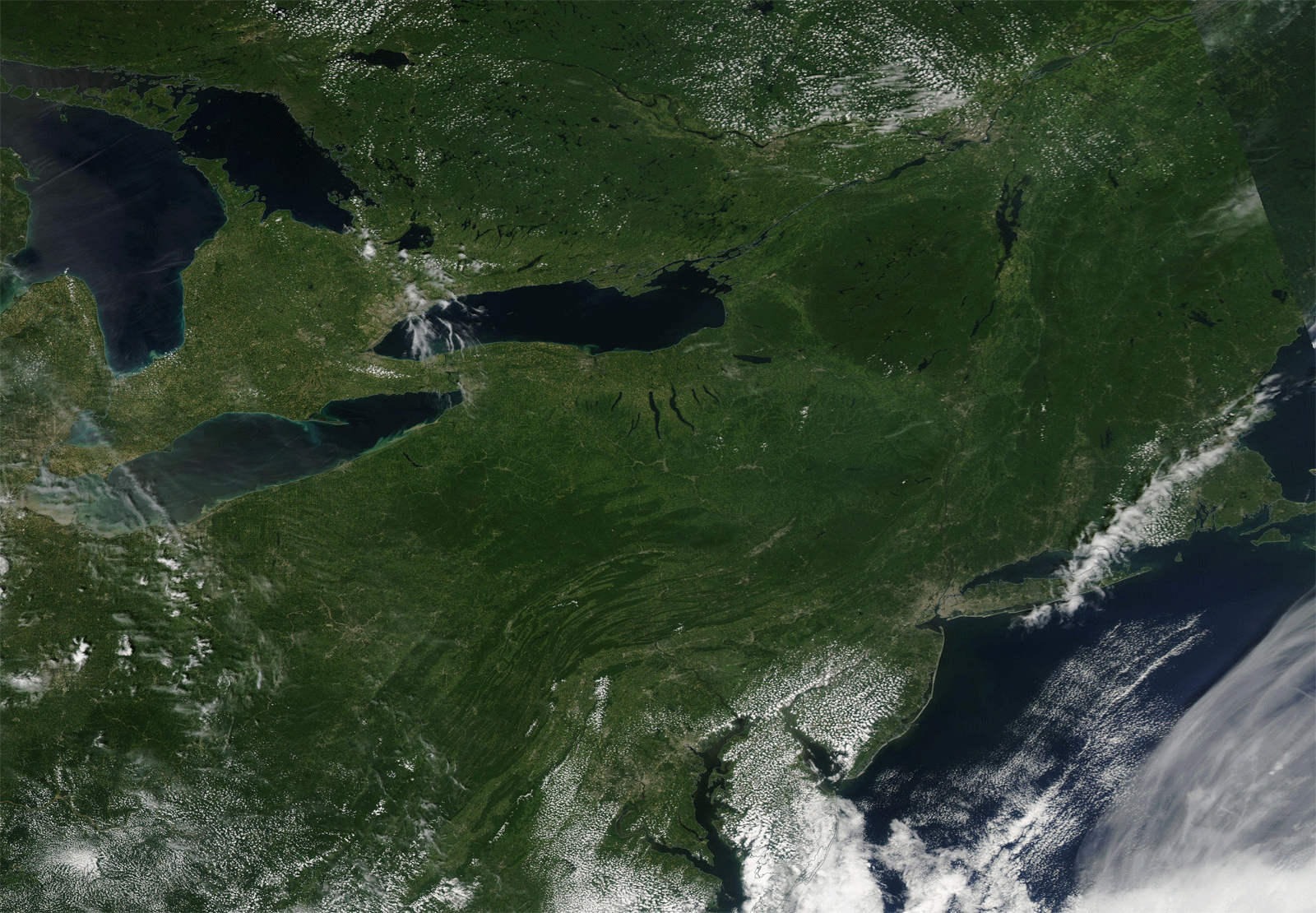The microscopic world wows in these 'Small World' winners
Meteorologist/Science Writer
Friday, October 16, 2015, 5:32 PM - Tiny subjects deliver big wins in Nikon's Small World competition, NASA buzzes past icy Enceladus' north pole and watch from space as Summer greens burst into Autumn hues. It's Science Pics of the Week!
The microscopic world wows in these amazing images
The winners of Nikon Small World's 2015 Photomicrography contest were announced this week, showcasing some of these incredible views of the microscopic world.

1st Place: Eye of a honey bee (Apis mellifera) covered in dandelion pollen (120x). Credit: Ralph Claus Grimm
|
|
|
|
|
|
See these and dozens more - winners, honorable mentions and "images of distinction" on the Nikon Small World 2015 Photomicrography Competition website. They are well-worth checking out!
Cassini returns spectacular image of Enceladus battered, cracked north pole
As reported in this week's What's Up In Space, NASA's Cassini spacecraft, which has been orbiting Saturn since 2004, dove past the planet's icy moon of Enceladus on Wednesday, October 14, coming to within 1,839 kilometres of its north pole region.
On this flyby, Cassini snapped a number of close-up, hi-res images, which were featured on the NASA website the very next day.

A wide-field view of Enceladus' north pole, during Cassini's approach. Credit: NASA/JPL-Caltech/Space Science Institute
|
|
|
According to NASA:
Scientists expected the north polar region of Enceladus to be heavily cratered, based on low-resolution images from the Voyager mission, but the new high-resolution Cassini images show a landscape of stark contrasts. "The northern regions are crisscrossed by a spidery network of gossamer-thin cracks that slice through the craters," said Paul Helfenstein, a member of the Cassini imaging team at Cornell University, Ithaca, New York. "These thin cracks are ubiquitous on Enceladus, and now we see that they extend across the northern terrains as well."
Cassini's next flyby of Enceladus will take place on October 28, when it will fly straight through the icy plumes at the moon's south pole, at a distance of just 49 kilometres above the surface! According to NASA: "Mission scientists are hopeful data from that flyby will provide evidence of how much hydrothermal activity is occurring in the moon's ocean, along with more detailed insights about the ocean's chemistry -- both of which relate to the potential habitability of Enceladus."
Summer greens fade into an explosion of Autumn hues
Summer was certainly hanging in there for September, but watch here as NASA satellites catch the sudden burst of fall colours from space as we progress further into October.

Credit: NASA Worldview
These views of the lower Great Lakes region and northern Appalachians were captured by NASA's Terra and Aqua satellites, on July 16, August 16, September 15 and October 12, 2015. Although some "browning" shows up in the western portion of the image in the September frame of the animation, this is mostly due to the fall harvest. The explosion of colour north of Lake Ontario - especially through Algonquin Park - and along the Appalachian mountains, truly reveals Autumn's arrival.
Sources: Nikon Small World | NASA | NASA Earth Observatory









